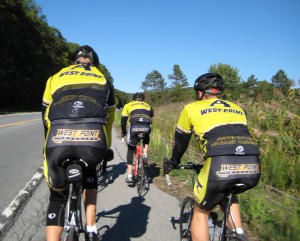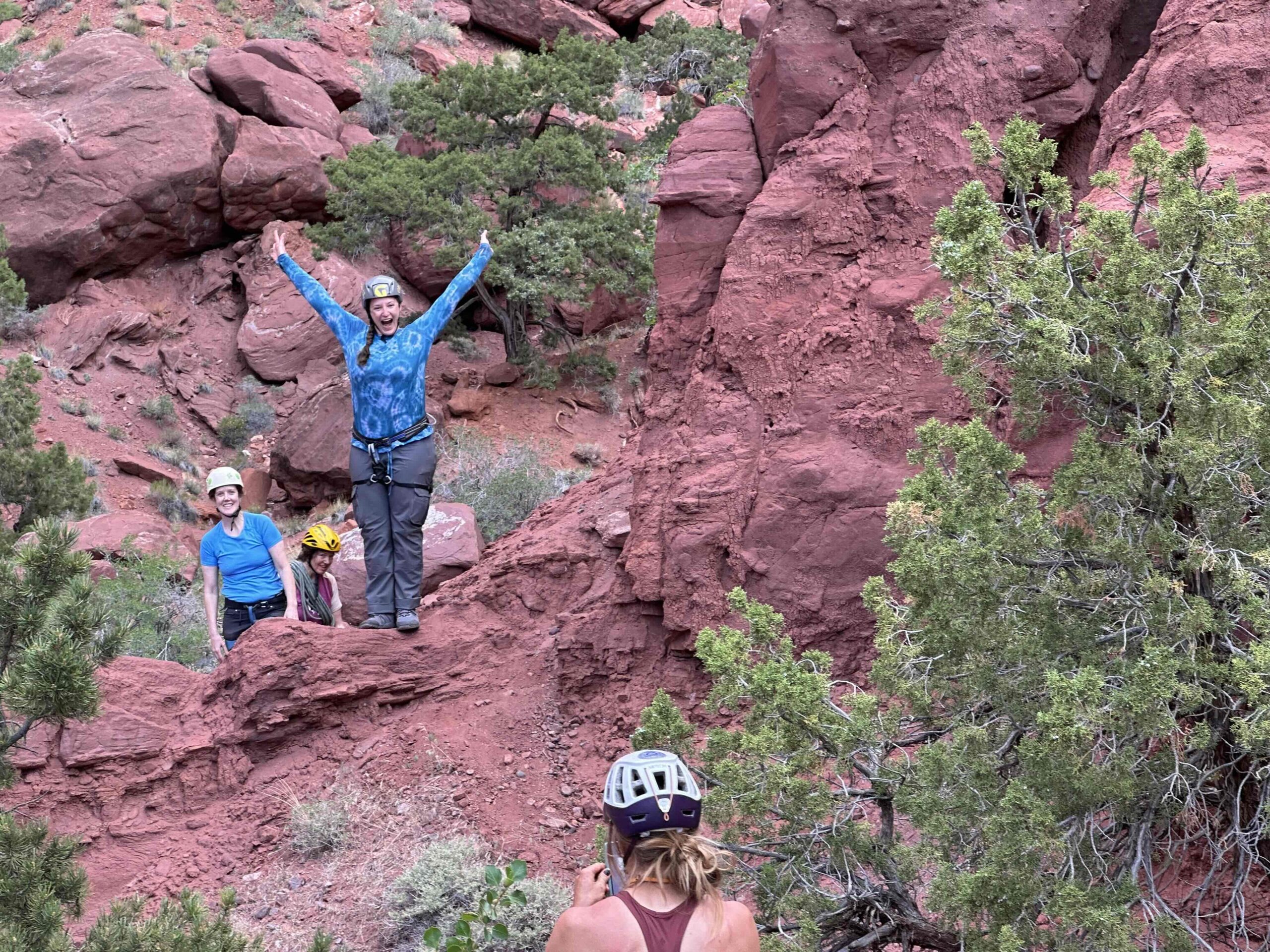 I am currently engaged with graduate students studying leadership and team dynamics, so presented with the opportunity, I jumped at the chance to ride with the West Point Cycling Team. I couldn’t imagine a better opportunity to observe a collegiate team in action than to spend two hours riding with them while they’re doing what they do. In fact, I can’t imagine too many college sports where someone of a certain age could intimately participate without risking serious bodily injury!
I am currently engaged with graduate students studying leadership and team dynamics, so presented with the opportunity, I jumped at the chance to ride with the West Point Cycling Team. I couldn’t imagine a better opportunity to observe a collegiate team in action than to spend two hours riding with them while they’re doing what they do. In fact, I can’t imagine too many college sports where someone of a certain age could intimately participate without risking serious bodily injury!
As we were preparing to ride, the team assembled in the basement of Cullum Hall – one of those ancient, granite fortresses along the Hudson River. The basement was pretty dingy and damp, but what I noticed most was how quiet the team was as we assembled on a cool autumn morning. The team came to work, and approached their preparation very methodically. Pre-ride preparation means lowering the chance of mechanical failures, being properly fueled, and having the right layer of clothes to stay comfortable. This preparation is as much selfish as it is for the team. Getting stuck on the side of the road, or falling off the back will mean the team waits, and diminishes the training objective and effect.
As we started the ride, the team captain announced the route – a two hour ride with some hills. “Some hills” turned out to be nearly 2,000 feet of climbing. The team was outfitted in black and gold kits, and it was with great pride that I rode off post towards the hills with about fifteen of our nation’s best and brightest. As we warmed up, the good natured jokes started immediately. There was a quote from a British officer who recently visited West Point and told the cadets their institution was basically a “Mensa prison” disguised as a college. There were also announcements of nicknames and self-deprecating jokes that established the tenor of the ride, and served to set performance expectations. In case I couldn’t tell from body types, I got a quick run-down on the climbers, sprinters, and track racers. At the same time, the dynamics of the team came alive.
“Dynamic” can be characterized by energy, force, or power – especially one that motivates. And this team dynamic was immediately on full display. To the untrained eye, cycling might not seem to be a team sport, but the physics of velocity deem tactics of strategic importance. The trash talk gave way as the slope of the road increased, and the physical leaders emerged as the pace increased. As the position of riders in the group ebbed and flowed, I realized that the team had created equilibrium of competition and collaboration. The average rider on the team is about 20 years old, and somehow two months into their training season they had formed, stormed (I assume), normed, and were now performing quite well. For an institution known for its rigidity and hierarchy around command and control, I observed a very self-directed team.
The United States Military Academy often refers to their cadets as future leaders of America’s sons and daughters, and during the ride, I wondered what a business or non-profit team could learn from these emerging leaders. For one, the tough selection process, especially in a time of war, means there is tremendous amount of homogeneity not usually found in today’s work teams. But that’s now what I saw bringing the team together. I saw a shared sense of purpose, a common vision for the future, and a commitment to not let the team down by giving anything less than one-hundred percent effort. In essence, there was a shared objective, a shared commitment, and a shared sacrifice. The intrinsic reward is simply their place on the team, and a sense of belonging. The only punishment I could envision would be not meeting the team’s expectations resulting in the loss of respect amongst one’s peers.
If your team can create a shared objective you’re half-way there. The other more difficult half is figuring out how to create a shared commitment with a corollary sacrifice. Getting buy-in on sacrifice is the hard part, because that means giving something up (e.g., time, other projects, etc.), and that represents change. And change is something most people abhor. Successful change occurs when motivations and rewards are aligned, and the inevitable “what’s in it for me” is much harder to calibrate on a diverse team. But as they might say at West Point, leadership is not for sissies, and the reward is in the privilege of belonging to something bigger than oneself.
Article first published as Team Dynamics at West Point — A Shared Experience on Technorati.






